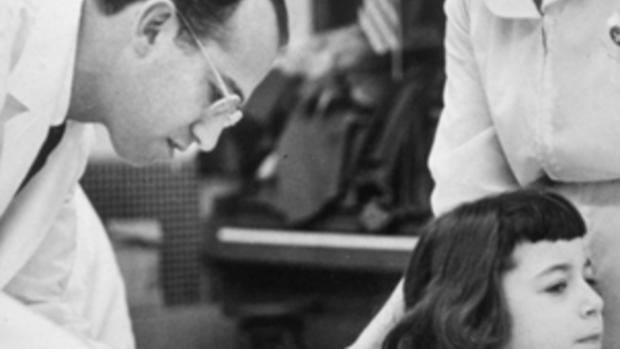Paralyzing "polio-like virus" suspected in up to 25 California children
A polio-like syndrome has caused partial paralysis in five California children since August 2012, putting researchers and public health officials on high alert as up to 25 cases are being investigated.
"These five new cases highlight the possibility of an emerging infectious polio-like syndrome in California," Dr. Keith Van Haren, an instructor in neurology and neurological sciences at the Stanford School of Medicine in Palo Alto, Calif., said in a written statement Sunday.
Van Haren and fellow researchers will present their findings on the California infections at the American Academy of Neurology’s annual meeting in Philadelphia April 26 to May 3, 2014. The academy said on Monday that between 20 and 25 suspected cases have been reported, but only five have been confirmed.
The researchers are calling it a polio-like syndrome and not the actual
poliovirus, pointing out that all five confirmed cases received polio
vaccines. After noticing several cases at Stanford Medical Center, Van Haren and colleagues decided to look into other cases throughout the state of California.
None have seen improvement in symptoms, and still had poor limb function within six months of diagnosis.
Two of the children tested positive for enterovirus-68, a rare form of a virus that has been associated with polio-like symptoms. But the other three children had no cause identified for their disease.
"We would like to stress that this syndrome appears to be very, very rare. Any time a parent sees symptoms of paralysis in a child, the child should be seen by a doctor right away," said Van Haren.
About 10 to 15 million people in the U.S. develop non-polio enteroviruses each year, but most do not get sick or have a mild respiratory infection that feels like the common cold, according to the Centers for Disease Control and Prevention.
Infants and people with weakened immune systems have a
greater chance of having the infection spread to the heart and brain, or causing paralysis, the CDC adds.
Dr. Carol Glaser, leader of a California Department of
Public Health team investigating the illnesses, told the Los Angeles Times that
cases are occurring sporadically throughout California, and a virus might play a
role. She added that scans of the children’s spinal cords showed damage
patterns similar to what’s seen in polio sufferers.
She urged doctors and local health departments to report new cases of acute paralysis.
Polio was a U.S. scourge in the 1940s through early 1950s, crippling about 35,000 Americans each year, according to the Centers for Disease Control and Prevention.
It’s caused by an infectious virus that is transmitted from person to person and invades their brains and spinal cords to cause paralysis. The introduction of a vaccine, which was announced to be safe and effective in 1955, led to the U.S. eradicating polio by 1979.
Vaccines have virtually eliminated polio worldwide as well, except in Afghanistan, Nigeria and Pakistan, where the disease is still endemic. Health officials warned recently that a polio strain in Peshawar, Pakistan may threaten worldwide eradication efforts.

